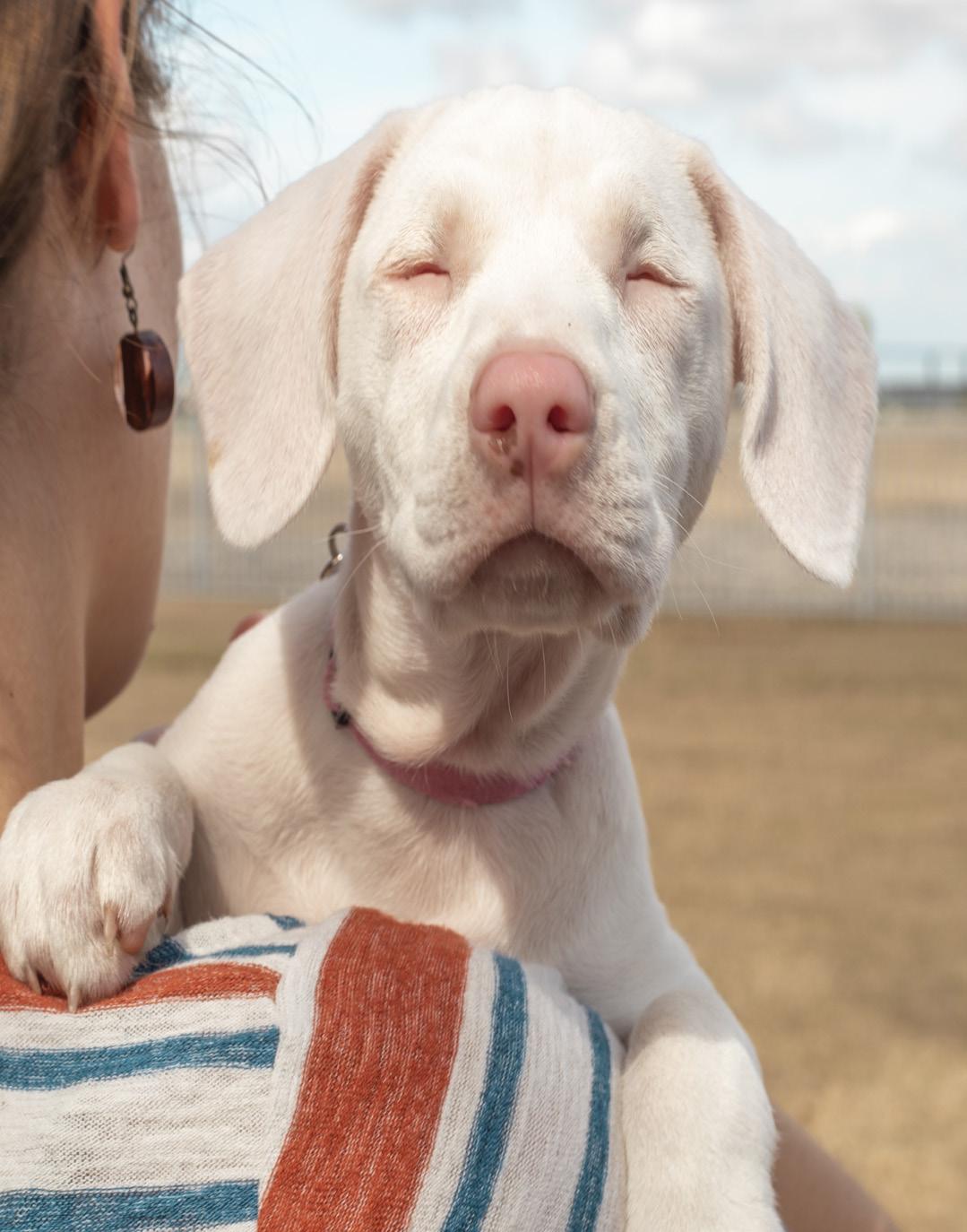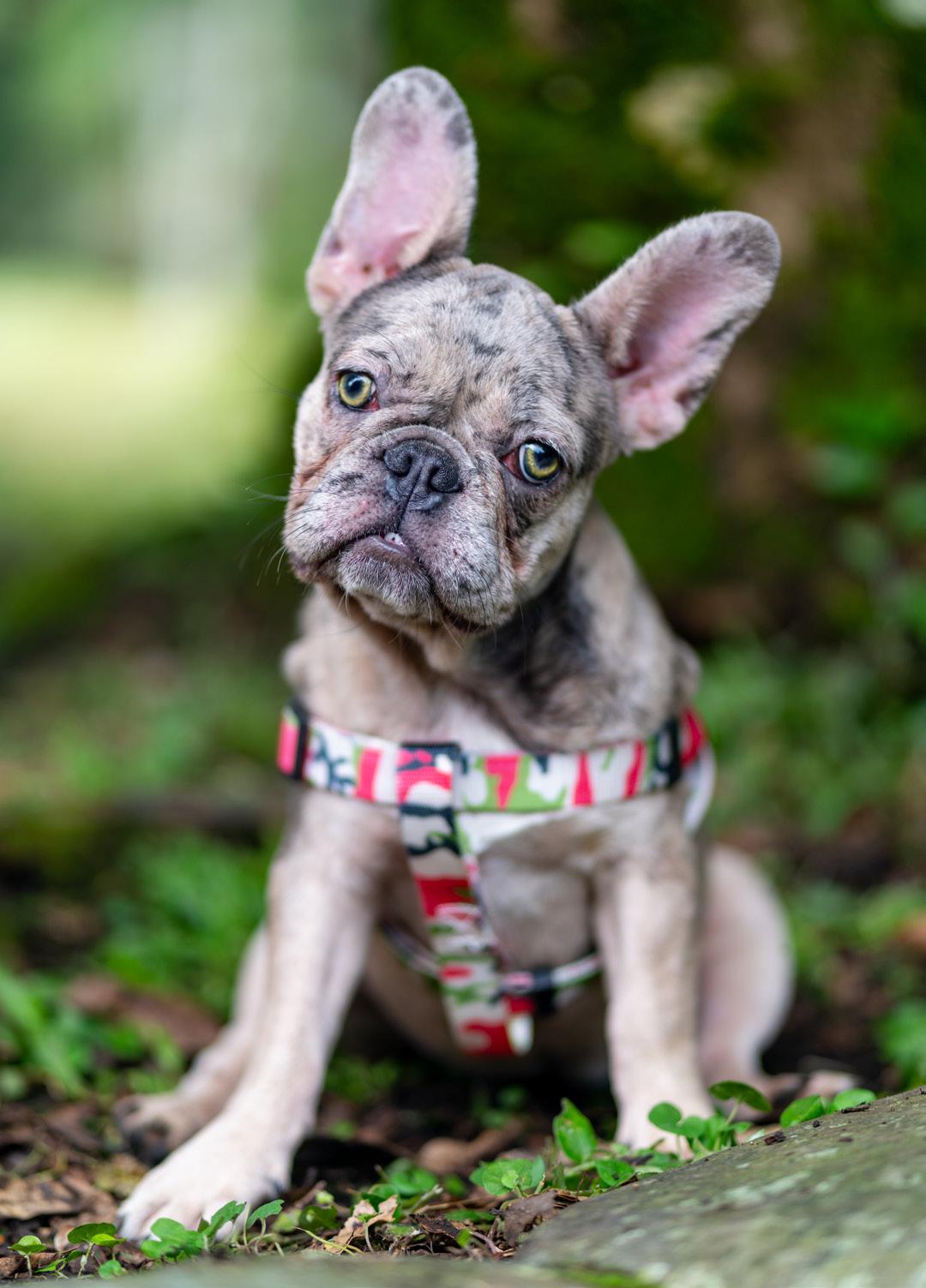
6 minute read
When Popularity & Profit Win Over Responsible Breeding.
WRITTEN BY: HALI SELERT, Staff Writer
We’ve all seen dogs that are just so cute, dogs that you just can’t but help to look at and squeal in glee. Whether it be their color, their size, the pattern of their fur— they’re just different and adorable. What we typically don’t think about is what genetic mutation got them to be so cute. What sacrifice did the person breeding their parents make in hopes that the puppies would be extra cute? Extra cute always means extra money... right?
Advertisement
A lot of times, breeders have specific looks they’re trying to achieve in their puppies. The hope is that a litter of puppies will be unique looking, and therefore bring in a lot of money. Whether this unique factor is a specific pattern, color, size, or build-- different is more marketable, and oftentimes, a driving force behind a person’s choice to begin breeding dogs.
Breeding for Color
The idea from this article came from a puppy that is just so cute, nobody can handle it... Wonder! Wonder was surrendered to Eunoia Rescue in January because despite how stinking cute she was, she was worthless to her breeders. Wonder is completely deaf and blind, which her breeders knew was a substantial risk. This is because Wonder is a double merle puppy.
Merle dogs are commonly known for their multi-colored, splotchy coats (think Australian Shepherds and Catahoula Leopard Dogs), but the merle gene can result in blue eyes, and lighter skin pigmentation as well. Although merle dogs have been around for centuries, and are breed standard in the breeds mentioned previously, the genetic mutation was not identified, or given a name until 2006. Once the gene was discovered, it was not long before the mutation was exploited, and began being introduced artificially into breeds where it was not yet seen before like English and French Bulldogs, Chihuahuas, Pomeranians, and Pitbulls.
Breeders of merle dogs need to be cautious when breeding, because if two merle dogs are bred, their puppies have a 25% chance of inheriting the merle gene twice— resulting in a double merle dog, like Wonder. Double merle dogs have a significant risk of being deaf, blind, or both— some studies have shown that the risk is over 50% of some sort of impairment. This risk comes despite breed, so owners who have a merle dog that is not altered need to be cautious!

Wonder, born blind and deaf, is what is called a double merle, who have 50% chance of some type of impairment.
Photo by Mackenzie Ivey.
Unfortunately, double merle genetic mutations aren’t the only risk breeders take to make a dime. It has become rather popular for breeders to work hard to breed for size. One of the most notable is the bulldog. Breed standard, and descriptions from centuries ago when the breed first emerged illustrate a much different dog than we think of now. In the 1700’s, accounts of bulldogs describe a dog that looks more like a modern day American Pit Bull Terrier. They had longer legs and snouts than the bulldog we know now, which was necessary for them to perform their jobs-- owners couldn’t afford to have dogs who could barely run without having a full blown asmathic attack.
Along with the divergence of overall size and build came a change in the facial anatomy of bulldogs. Breeders have discovered that “cute” sells, and let’s face it, wrinkles are adorable. Due to this, breeders have slowly changed the facial structure, in an anti-evolution sense. Usually, species develop and adapt over time, removing health barriers to better the animal’s chances at living long, healthy lives. However, the opposite has happened over time via breeders of bulldogs. Although adorable, wrinkles and smushed faces pose several health issues for dogs.
Bulldogs have become known for their breathing issues, namely, Brachycephalic Airway Syndrome (BAS). This often leads to severe breathing problems, which allows for little to no exercise for the dogs without issue. BAS also makes bulldogs more prone to heat stroke. If you think breathing issues are the only medical problem to expect from your bulldog, you are sadly mistaken. Bulldogs also commonly have hip/knee issues, severe allergies, and fungal and bacterial infections in the folds of their wrinkles.
The idea of changing a breed’s anatomy to mirror what society has deemed cute has spilled over into other breeds, including in the breed category of “pit bull.” Enter the Shorty Bull or “Pocket Pit.” These “mini” pits are shorter in nature, generally have squishier faces, and are described as “low riders.” These dogs are almost cartoon-like in appearance, which of course draws a lot of public attention. However, as is the case when you tamper with genetics, there are downfalls. Not only do they experience the health issues that bulldogs do, there is also an unexpected genetic abnormality-- urethral issues. Prolapses are common, and oftentimes corrective surgery from a specialist, as well as a prescription food for life, are the only way to ensure that the dog gets to live a “normal” life.

Above: A Shorty-Bull or Pocket Pit is failrly new popular breed that is more cartoon charcater than dog. Below: French Bulldogs are the 2nd most popular breed in the country, Full of genetic issues and a new breed to be bred with the “merle” coat.

Photo by Adobe Stock
In order to get a unique looking dog, unique looking parents are often required. Supply and demand— there is an inherently low supply of unique looking dogs, and the demand is very high. This unfortunately leads to over- and in- breeding of dogs to ensure the irresponsible breeder gets to capitalize on their reproductive abilities as much as possible.
If only there was some sort of sign that humans have altered the genetic makeup of these dogs too far-- maybe then, breeders would back off and return to the mantra of “bettering the breed.” There is! Frequently, especially with French Bulldogs, natural breeding is no longer possible. Breeders haven’t let this slow them down though; vets across the country, and even in Charleston, have offered a solution-- artificial insemination. You’ve changed your dog’s anatomy so much that the male can no longer successfully impregnate a female because his legs are too short, or he’s having too many breathing issues to do the deed? That’s okay, we’ll have someone collect a specimen, and insert it into a female dog. But what if the female can’t naturally deliver? Don’t worry, C-sections for dogs are available! Keep in mind, a breeder isn’t going to just eat this cost, the cost of your “dream puppy” just shot up.
This article isn’t meant to make all breeders look bad, but simply to point out important factors that pet parents need to be aware of when thinking of purchasing a dog (although, really, you should adopt). Owners should reference breed standards when considering a dog to be purchased. A “rare” color, size, or pattern means artificial, aka the result of genetic mutations, and that means medical (and possibly behavioral) problems in the future. It’s normal for a gut reaction to be “oh that puppy is so cute,” but try to make your next thought “what about their parents, what about its future.” Oh and PS— Wonder is still available for adoption through Eunoia Rescue. ■







